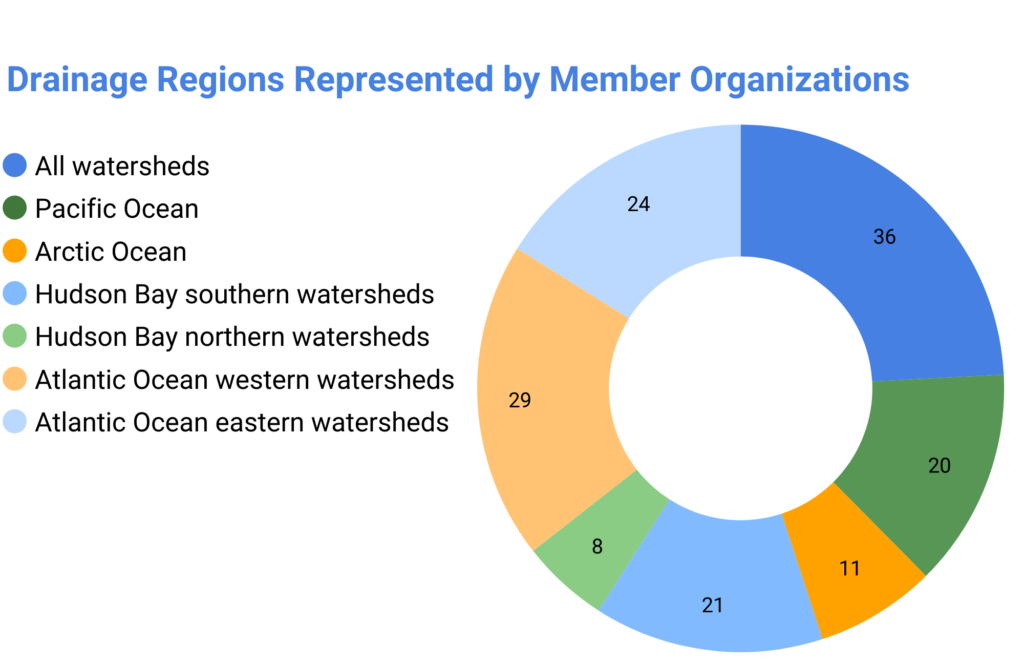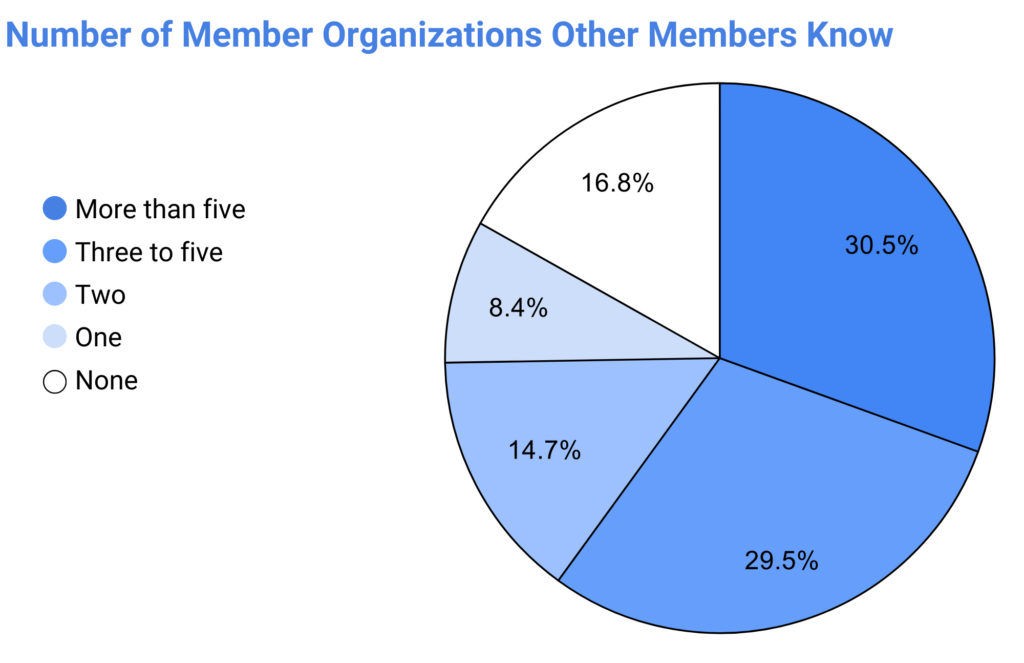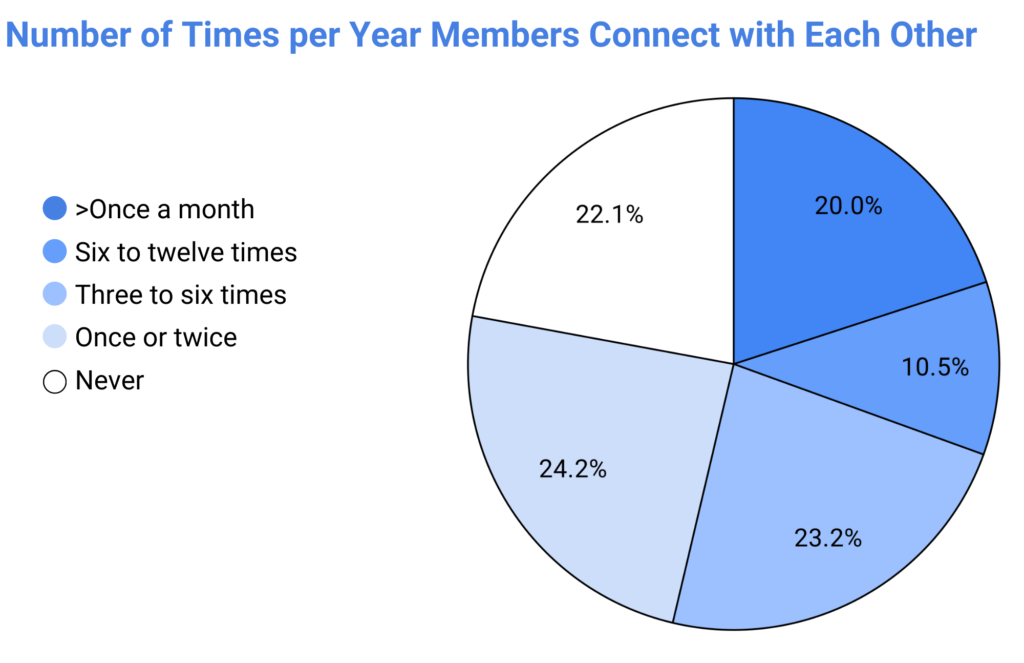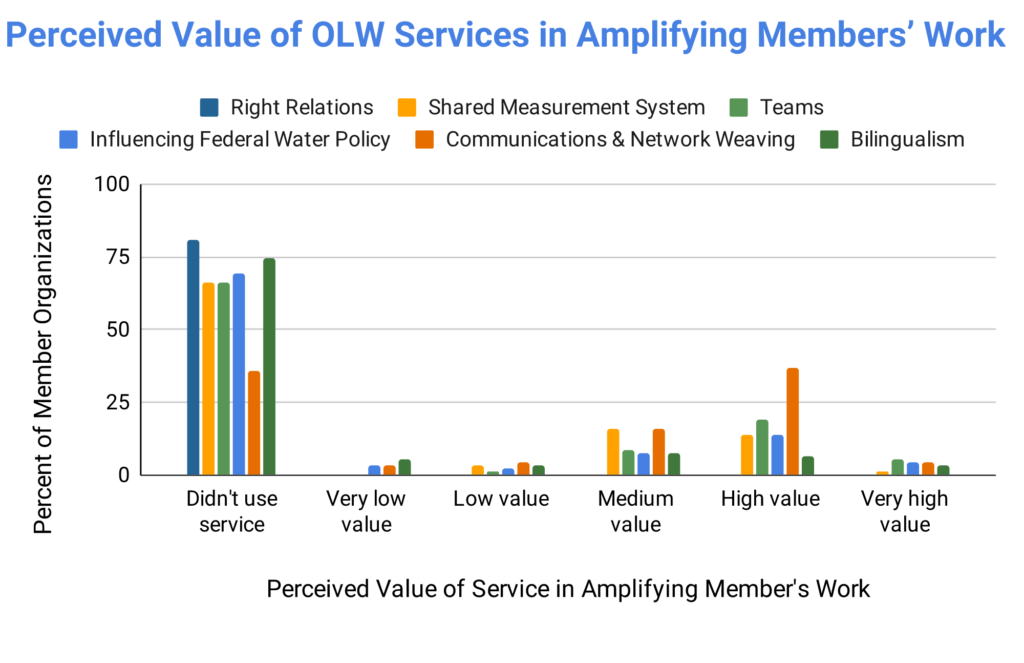As Our Living Waters grew over the past few years, we adapted our services to meet the changing needs of our Network members. This year, the annual survey gauged the value of these adaptations by evaluating Network health.
We had a great response! A total of 82 organizations filled out the survey, representing 64.5% of the OLW Network’s organizational members.
As of March 2023, OLW had 182 members (including 127 organizations and 55 individuals). Of the 127 organizations, many work in all watersheds across Canada, while others focus on local or regional scales. Not surprisingly, the most populated watersheds are best represented by Network members. The chart to the right shows the distribution of OLW Network members across six major drainage regions in Canada, as defined by Statistics Canada’s map. (The total exceeds 127 because some organizations work in multiple watersheds).

We also asked how connected OLW Network members are with each other. In the two charts below, you can see that about one third of members know more than five other organizations and also connect with each other at least once every two months. As a result, we recognize the need to continue our networking efforts to target this third of actively involved members, and/or adapt our future efforts to better connect less engaged members in the Network.


Network members also identified which of our services are most valuable to their own organizational goals. As you can see in the chart to the right, we found that a small core group of Network members uses our services; of these people, most find that our services have medium to high value in amplifying the impact of their organization. Again, we recognize the need to adapt our service delivery in light of who is using which services and to what end.
Finally, OLW members helped us imagine the Network’s future. Although there were many suggestions, we heard resounding support for OLW to continue in the role of a bilingual national network weaver, coordinator, facilitator, connector, unifier, convener or partnership builder.
We are so grateful for the different ways all of our members contribute to the Network, and we hope you stay tuned for more updates on our future visioning!
